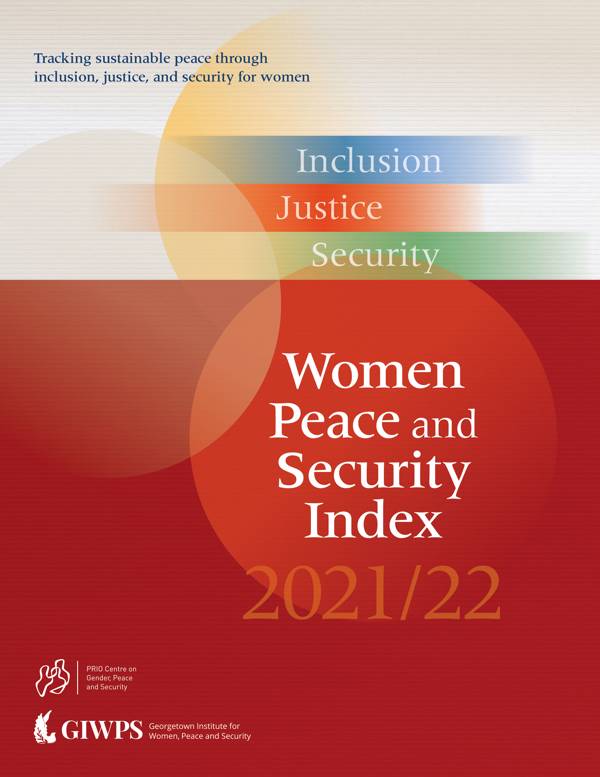The third edition of the global Women Peace and Security Index (WPS Index) draws on recognized data sources to measure women’s inclusion, justice, and security in 170 countries.
Trends in the WPS Index show that the global advance of women’s status has slowed and disparities have widened across countries.
The WPS Index is published by the Georgetown Institute for Women, Peace and Security and the PRIO Centre on Gender, Peace and Security with support from the Norwegian Ministry of Foreign Affairs.
This third edition of the global Women, Peace, and Security (WPS) Index provides important insights into patterns and progress on women’s status and empowerment around the world. It reflects a shared vision that countries are more peaceful and prosperous when women are accorded full and equal rights and opportunities.
In many ways, it seems a lifetime ago since the 2019 report, and this year we seek to capture insights about the repercussions of the COVID pandemic for women’s inclusion and security. The results are sobering. The global pace of improvement in the WPS Index has slowed considerably, with widening disparities across countries. This reflects a worsening of inequalities in the status of women, as countries at the top continue to improve while those at the bottom get worse, mirroring global trends in wealth and income inequality. The COVID pandemic has triggered multiple and overlapping crises, magnifying existing inequalities. For women, major challenges have worsened on several fronts—not least juggling paid jobs and unpaid care work—and have exacerbated threats to safety.
Key innovations this year have enhanced the value of the index.
First, improvements in data availability have expanded coverage to 170 countries—encompassing more than 99 percent of the world’s population. We explore trends across regions, indicators, and time since our inaugural 2017 index rankings.
Second, with forced displacement at unprecedented levels worldwide, we constructed new indices for forcibly displaced and host community women in five SubSaharan African countries to illuminate the challenges facing displaced women. The results reveal deep disparities, underscoring the compounding effects of displacement on women’s status and opportunities.
Third, we investigate WPS Index performance at the provincial or state level in Afghanistan, Pakistan, and the United States, revealing major disparities within country borders that national averages conceal. The results for Afghanistan, bottom ranked on the global index, are especially relevant at a time when Afghan women and girls face major threats to their basic rights and well-being. Our analysis reveals a precarious situation in many provinces where women and girls were already experiencing severe constraints on their opportunities outside the home and extremely high rates of violence.
Tracking the progress of women and pinpointing persistent structural gender inequalities are critical to informing equitable policymaking, especially in efforts to build back better in the wake of COVID. We see this year’s report as an important contribution to the growing evidence base underlining the importance of women, peace, and security and the Sustainable Development Goals, bringing partners together around a shared agenda for women’s inclusion, justice, and security.





.jpg?x=400&y=600&m=Cover&)





